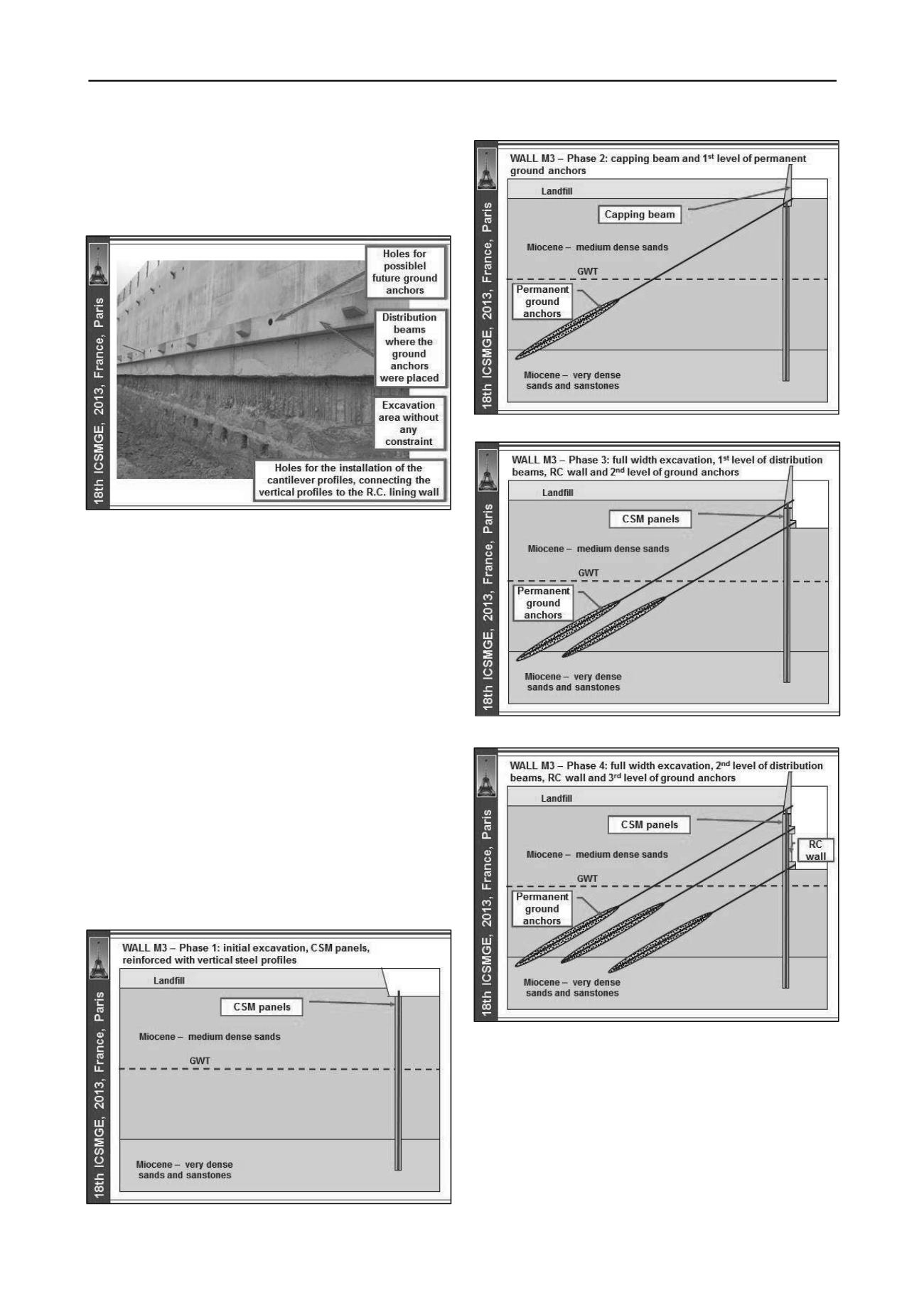
2073
Technical Committee 207 /
Comité technique 207
excavation platform (Figure 7, 8 and 9)
.
The preliminary
ground improvement effect due to the soil - cement panels
allowed the execution of the excavation works without any
restrictions, with big advantages on the excavation works
schedule, as well as on the RC wall finishing face (Figure 9)
.
Figure 9. Plan of the wall M3 at the distribution beams section.
The combination of the soil - cement panels with the lining
RC wall allowed the construction of a safe and economical
solution, overcoming the main disadvantages of the Berlin wall
solution (initial solution proposed for the same Project) and
spreading the solution application field to almost every kind of
geological and geotechnical scenarios, as well as to complex
and sensitive neighbourhood conditions
.
4 MAIN CONSTRUCTION PHASES
One of the main advantages of the adopted solution was the
possibility to reduce the excavation works overall schedule and
also to decrease the loss of confinement of the excavated soil
and, consequently, to decrease the wall and the neighborhoud
structures and infrastructures deformations.
The main construction phases are presented on the Figures
10 to 15
.
As already stated, it should be pointed out the big
advantage of the full width excavation, in each level, only
possible due to the soil – cement panels ground improvement
effect, leading to a big optimization of the construction overall
schedule. Due to the versatility of the CSM technology, it
should also be pointed out the possibility to apply this solution
to almost every kind of geological and geotechnical scenarios,
ranging from heterogeneous landfills and soft soils to medium
weathered rocks, like the sandstones intersected on present site.
Figure 10. Phase 1.
Figure 11. Phase 2.
Figure 12. Phase 3.
Figure 13. Phase 4.
A tight quality control and quality assurance of the main
geotechnical works: soil – cement panels using CSM
technology and permanent ground anchors, was implemented,
including UCS tests on soil – cement cores and suitability and
reception tests on permanent ground anchors (Gomes Correia et
al., 2013).


